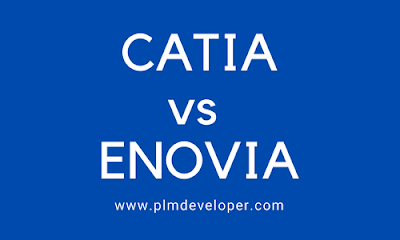Introduction
Are you evaluating Computer-Aided Design (CAD) or Product Lifecycle Management (PLM) software for your company? If so, you've likely encountered CATIA and ENOVIA during your research. Both products are developed by Dassault Systèmes, a leader in software solutions that transform the way products are designed, produced, and supported. Understanding the specific functionalities and strengths of each can significantly impact your operational efficiency and product development success.
CATIA: The Powerhouse of 3D CAD Modeling
CATIA, which stands for Computer Aided Three-dimensional Interactive Application, is renowned for its advanced CAD capabilities. It is extensively used across various industries, including aerospace, automotive, and industrial equipment.
Key Features of CATIA:
- Advanced Modeling Capabilities: CATIA offers a comprehensive suite of tools for solid, surface, and mesh modeling, ensuring high precision and complexity in 3D design.
- Simulation Tools: With its robust simulation features, CATIA allows engineers and designers to validate the physical properties of their models, ensuring viability before production.
- Industry-Specific Solutions: CATIA provides tailored tools that meet the unique requirements of specialized industries, enhancing design innovation and efficiency.
For a deeper understanding of CATIA’s capabilities, visit the official CATIA page.
ENOVIA: Streamlining Product Lifecycle Management
ENOVIA is designed to facilitate comprehensive lifecycle management from the initial concept to product retirement. As a PLM software, it provides an integrated platform that supports data management, collaboration, and workflow optimization.
Key Benefits of ENOVIA:
- Lifecycle Management: ENOVIA manages all stages of a product’s lifecycle, ensuring streamlined processes and reduced time to market.
- Collaboration Tools: It enhances collaboration across various departments and stakeholders, centralizing data access and improving decision-making efficiency.
- Workflow Optimization: ENOVIA automates workflows, helping teams manage changes and maintain compliance with industry standards.
Explore more about ENOVIA's features and benefits on the official ENOVIA page.
Comparing CATIA and ENOVIA
While CATIA and ENOVIA are both exceptional in their respective areas, they serve distinct purposes:
- CATIA is primarily a CAD tool focused on creating detailed, precise 3D models and simulations.
- ENOVIA, on the other hand, excels as a PLM system designed to manage and optimize the entire product development process.
Using CATIA and ENOVIA together can be a powerful combination for businesses that require detailed design integrated with lifecycle management. The integration ensures that models developed in CATIA are seamlessly managed through ENOVIA, facilitating better product information flow and collaboration.
Conclusion
Choosing between CATIA and ENOVIA depends on your specific business needs—whether you need robust CAD capabilities or comprehensive lifecycle management. However, many companies benefit from leveraging both to maximize their design and development processes. By understanding the unique strengths of each platform, you can make a more informed decision that aligns with your strategic goals.
For further insights and detailed comparisons, consider visiting PLM Technology Guide, which provides reviews and comparisons of various PLM and CAD software.





0 Comments